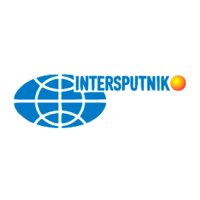These interviews are preformed by the Chairwoman of the Operations Committee Ms. Ksenia Drozdova. The purpose of this project is to provide a vast variety of views and ideas related to satellite communications and broadcasting development all over the world – from LatAm to Europe, Africa, Middle East and Asia.
Asia, especially South East Asia, is an ideal market for satellite connectivity and broadcasting. As a result, many countries in the region has been successfully using national satellite systems for bridging digital divide and now for digital inclusion. Vietnam is a good example, where national satellite system is organically embedded into the national economy, which has been developing in a good pace.
In this connection the “Voice of Satellite Industry” presents an interview with Mr. Lam Quoc Cuong, Managing Director of VNPT-I.
Mrs. Ksenia Drozdova:
Vietnam is one of the most dynamically developing countries in South East Asia. Traditionally in this region the ICT sector is one of the major economic drivers. Vietnam for more than 10 years has been successfully operating national satellite communication system at geostationary orbit. What is the contribution of satellite communications in the framework of telecom sector development and the country’s economy in general? And to what extent the expectations from the bet on national satellite system have been met?
Mr. Lam Quoc Cuong:
Vinasat-1 is the first Vietnam’s geostationary satellite operating at the orbit of 132degree East. Assigned by the Government, VNPT officially built and implemented the project to launch satellite to the orbit along with managing and exploiting since April 19th, 2008. Four years later, Vinasat-2 was officially launched and operated at orbit 131.8degree East on May 16th, 2012. Vinasat satellite has made great contributions to the development of telecommunication industry and economy in Vietnam after more than 10 years of operation.
Vietnam Telecommunication Industry established a supplement infrastructure model of information and communication via its own satellite system that contributes for better development of socio-economy, ensuring national security and defense and expanding international cooperation and integration. Since Vinasat satellite was put into operation, all the information of storms, floods and other changeable climate phenomena have been easily and conveniently accessible. Under satellite’s coverage, vessels are able to collect information quickly and minimize natural disasters. By switching to Vinasat instead of other foreigner satellites, the Ministries and Affiliates save millions of US dollar for Vietnam yearly.
Besides bringing communication to remote areas such as borders, islands in Vietnam and Southeast Asia, Vinasat satellite also provides other services such as broadcasting, Home TV (DTH–Direct to Home), High-definition TV channels, Phone and Internet access (VSAT). The television field has greatly benefited by Vinasat satellite through easy live broadcast with lower cost than before. Online training and medical treatment also become more convenient through Vinasat satellite. The connection channel between BTS (Base Transceiver Station) and BSC (Base Station Controller) in mobile network is provided by satellite’s transmission service that contributes to improve mobile network’s quality.
The timely successful launch of Vinasat-1 brought Vietnam into one of 70 countries and territories in the world that have own geostationary satellites; confirmed the spatial sovereignty of Vietnam; occupied important and vital geostationary orbits. Geostationary satellite contributes to help Vietnam strictly control the country's spatial sovereignty and provides Vietnamese satellite services to other countries. Vinasat satellite has been continued to satisfy the satellite communication demands of the Ministries, Affiliates, enterprises in Vietnam and other countries under the satellite’s coverage. Satellite communication is expected to continue contribute to the Fourth industrial revolution in Vietnam. However, with the current rapid development of technology, the need for broadband access with higher quality is a problem for Vinasat satellite’s system.
Mrs. Ksenia Drozdova:
The current development of telecommunication technologies (5G, IoT, AI and etc.) requires up-to-date satellite solutions, based on very high throughput, flexible payload configuration and use of higher frequency bands. Major prospect markets for satellite are Consumer Broadband, Mobility and Backhaul require new High Throughput Satellites (HTS), which use high power spot beams with frequency reuse in Ka-band. Does Vietnam have any plans on HTS satellite? And whether Intersputnik can be useful for you as a platform for joint development of such HTS satellite using cooperation model?
Mr. Lam Quoc Cuong:
Vinasat satellite has been operated for more than 10 years and the final limit of a geostationary satellite’s life span is nearly reached. New project to launch a satellite with more capacity and advanced technology will meet the needs of both domestic and foreign territories within Vinasat satellite’s coverage is prepared by VNPT. One of the solutions we are looking at for satellite at orbit 132degree East is HTS, the new satellite is expected to combine
- Ka band covers Vietnam and some Asian countries (depending on frequency coordination process between countries).
- C band and Ku band with Vinasat-1 and 2’s parameters and coverage.
We are willing to work with concerned partners to deploy this project, highly appreciate if Intersputnik has a plan to cooperate with us to launch and exploit the new satellite in this orbit.
Mrs. Ksenia Drozdova:
In the course of rapid development of terrestrial technologies (fiber and cellular) the most promising application left for satellite are backhauling, mobility and media content distribution, including satellite CDNs. Are these applications interesting for VNPT or national satellite operators and whether you are ready to consider joint projects on such prospect applications in the framework of Intersputnik? For example, regional/global maritime VSAT networks roaming or creation of a satellite CDN for national/regional content distribution?
Mr. Lam Quoc Cuong:
Backhauling, mobility and media content distribution including satellite CDN (content delivery network) are the most promising applications left for satellites to serve. However, under VNPT’s context of satellite services providing markets, the television industry and the mobile communication as well as telecommunications infrastructure companies (Telcos) are on a downward trend in their use of satellite technology. Meanwhile big challenge to maintain the traditional customers and develop new ones is made by fiercely competing among satellite operators. Cooperation strategies with other partners are proposed by VNPT with a view to providing satellite services for the maritime, mobile roaming via satellites and distributing content to markets that are not under coverage by Vinasat satellite. Currently, satellite broadband promising projects of major partners such as SpaceX, OneWeb or Softbank's HAPS are observed and considered the possibility of cooperation in the future. Intersputnik's satellite system’s new applications and possible cooperation between the two sides are always expected by VNPT.
On behalf of VNPT, wish Intersputnik a successful upcoming new year 2021!
***
 Operations Committee
Operations Committee
